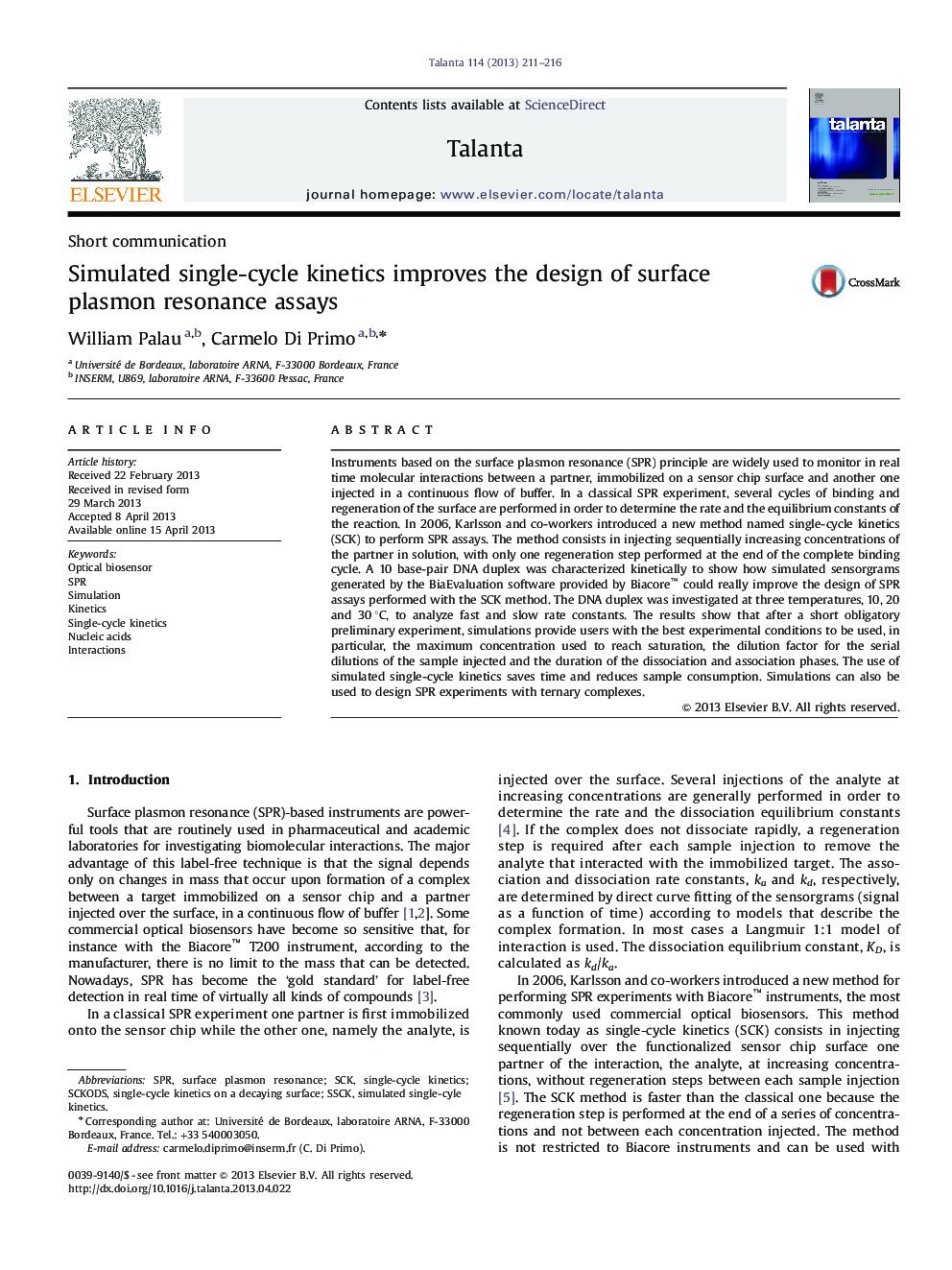| Article ID | Journal | Published Year | Pages | File Type |
|---|---|---|---|---|
| 7681848 | Talanta | 2013 | 6 Pages |
Abstract
Instruments based on the surface plasmon resonance (SPR) principle are widely used to monitor in real time molecular interactions between a partner, immobilized on a sensor chip surface and another one injected in a continuous flow of buffer. In a classical SPR experiment, several cycles of binding and regeneration of the surface are performed in order to determine the rate and the equilibrium constants of the reaction. In 2006, Karlsson and co-workers introduced a new method named single-cycle kinetics (SCK) to perform SPR assays. The method consists in injecting sequentially increasing concentrations of the partner in solution, with only one regeneration step performed at the end of the complete binding cycle. A 10 base-pair DNA duplex was characterized kinetically to show how simulated sensorgrams generated by the BiaEvaluation software provided by Biacore⢠could really improve the design of SPR assays performed with the SCK method. The DNA duplex was investigated at three temperatures, 10, 20 and 30 °C, to analyze fast and slow rate constants. The results show that after a short obligatory preliminary experiment, simulations provide users with the best experimental conditions to be used, in particular, the maximum concentration used to reach saturation, the dilution factor for the serial dilutions of the sample injected and the duration of the dissociation and association phases. The use of simulated single-cycle kinetics saves time and reduces sample consumption. Simulations can also be used to design SPR experiments with ternary complexes.
Keywords
Related Topics
Physical Sciences and Engineering
Chemistry
Analytical Chemistry
Authors
William Palau, Carmelo Di Primo,
